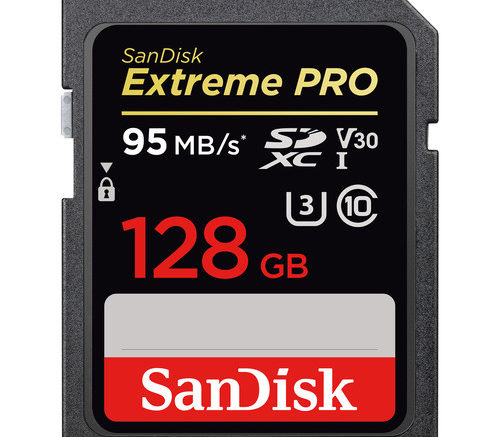The other day I happened to notice that there are web sites advertising 128GB SD cards for about 25 bucks. That, by the way, is about the same amount I paid for a 4 megabyte flash card back in 1998. In case you aren’t feeling like a math whiz, that’s 32,768 times more storage for the same price. And realistically, that doesn’t even take inflation into account. Which led me to one and only one conclusion:
SD cards are about to go extinct.
Now, hear me out. Technology follows a fairly predictable pattern. You can apply it to everything from computers to cell phones to cars if you really think about it. Follow along:
1. New technology comes out and it’s insanely expensive.
You know, like when everyone wants to have it, and it’s super exciting, but it’s too expensive for you to get.
2. There are frequent upgrades but the price remains the same.
Think about the first several years of smartphones. They got better but the prices didn’t change.
3. You start to see specs that are more than anyone will ever use. Prices spike up.
Does anyone need 128GB for music on an iPod Classic? Of course not. But that’s ok, it’s cool that you can get something like that. I think we’re at that stage with cell phones. More storage, more capabilities than ever but the prices are astronomical.
4. Suddenly, prices drop super quick.
Think about the last several years of televisions. Five years ago a 60″ 4K TV was out of the reach of all but the landed gentry. Today you can pick one up for under $500 and it looks great.
5. As soon as everyone has what they want, the thing starts to get scarce and prices go up.
Remember that time that you thought you were done with VHS and you had to record something for Aunt Molly? That VHS tape at the convenience store was like $15, when they used to be $3.99.
6. The thing disappears forever.
Point of reference: 8 track tapes.
Seems like SD cards are at step 4.
And when step 4 comes, steps 5 and 6 aren’t far behind. So I tend to think that we’re about to see the end of SD cards, at least full size ones. Maybe pro-grade cameras will use them for another year or so but things will quickly move to MicroSD and maybe just to permanently embedded storage, which is cheaper to make. After all, it’s just as easy to transfer photos wirelessly with most prosumer cameras.
This is a natural evolution with technology and what you have to wonder is, what’s next. Memory cards certainly can’t get much smaller and no one needs the capacities to go up. I do think the logical next step is just non-upgradeable memories. 128GB should be enough to store enough photos that you don’t have to worry about changing cards. That is, unless you’re a war photographer or you’re taking a trip to Mt. Everest. Most people would be just fine with embedded memory.
If you’re not… if you think you’ll need SD cards for a while…
Keep your eyes on SolidSignal.com. We do our best to carry a mix of older technologies. We keep prices as low as we can, but of course when you get to step 5, it’s because factories stop making things and supplies dwindle. We never try to overcharge no matter what it is we’re offering.
Who knows, you just might need an SD card in five years. We’ll be there for you.





